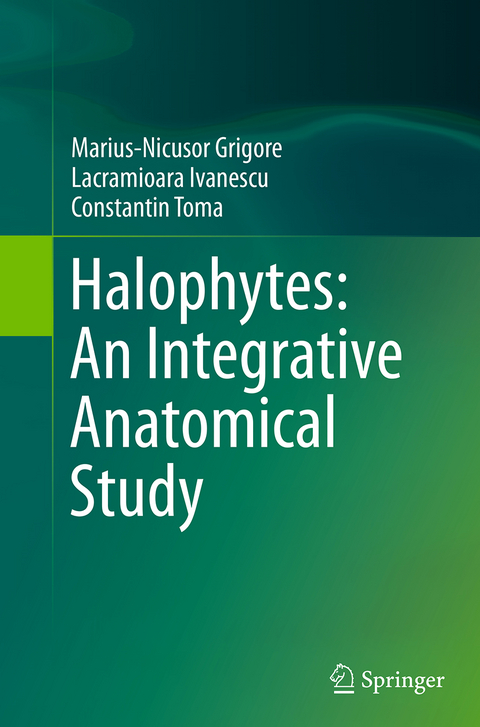
Halophytes: An Integrative Anatomical Study
Springer International Publishing (Verlag)
978-3-319-38192-3 (ISBN)
This book focuses on morphological and anatomical strategies developed by halophytes during evolution that allow them to survive in high-salt environments. These adaptive strategies refer to well integrated structural features, such as succulence, salt secretion (salt glands and vesicular hairs), aerenchyma, Kranz anatomy, bulliform cells, successive cambia, tracheoidioblasts and endodermis with pronounced Casparian strips. The authors present cross sections of the roots, stems and leaves of 62 halophyte species belonging to 18 families from different habitats and climates (temperate, Mediterranean). They also discuss the ecological, physiological and evolutionary aspects of the various adaptive structures in an integrative way. Beginning with the structural level, this book offers novel insights into the ecology of halophytes and opens new perspectives for the identification of salt-tolerant crop plants or halophytes that can be used for ecological purposes, such as bio-remediationand revegetation.
Introduction.- Halophytes definition and classification.- Halophytes and their habitats.- Finding a place within plant ecological classes.- General morphological and anatomical adaptations in halophytes.- Halophytes and salt stress.- Histo-anatomical features in halophytes: formative effect, adaptation or a simple response to an intensely abiotic factor?- Material and Methods.- Caryophyllaceae.- Chenopodiaceae (Amaranthaceae).- Polygonaceae.- Plumbaginaceae.- Fabaceae.- Lythraceae.- Apiaceae.- Frankeniaceae.- Brassicaceae.- Primulaceae.- Plantaginaceae.- Asteraceae.- Juncaginaceae.- Cymodoceaceae.- Iridaceae.- Juncaceae.- Cyperaceae.- Poaceae.- An overall view on halophytes adaptations and their ecological significance.
"This book, unique in its own way, focuses on the study of halophytes, plants able to survive in highly saline and arid conditions. Characterized by a great diversity and widespread in the plant world, they have a great theoretical and practical significance. ... In this way it represents a work of reference, a valuable scientific information instrument in the field of theoretical and practical biology, generally." (Aurelia Brezeanu, Romanian Journal of Biology, Vol. 58 (2), 2013)
“This book, unique in its own way, focuses on the study of halophytes, plants able to survive in highly saline and arid conditions. Characterized by a great diversity and widespread in the plant world, they have a great theoretical and practical significance. … In this way it represents a work of reference, a valuable scientific information instrument in the field of theoretical and practical biology, generally.” (Aurelia Brezeanu, Romanian Journal of Biology, Vol. 58 (2), 2013)
| Erscheinungsdatum | 29.08.2016 |
|---|---|
| Zusatzinfo | XIV, 548 p. 703 illus., 543 illus. in color. |
| Verlagsort | Cham |
| Sprache | englisch |
| Maße | 155 x 235 mm |
| Themenwelt | Naturwissenschaften ► Biologie ► Botanik |
| Naturwissenschaften ► Biologie ► Evolution | |
| Naturwissenschaften ► Biologie ► Genetik / Molekularbiologie | |
| Schlagworte | Adaptation • Biomedical and Life Sciences • Botany and plant sciences • Chenopodiaceae • Developmental Biology • Drought • Halophytes • plant anatomy • Plant Anatomy/Development • plant ecology • Plant Systematics/Taxonomy/Biogeography • salt stress • Salt tolerance • Succulence • systematic botany • Taxonomy and systematics |
| ISBN-10 | 3-319-38192-X / 331938192X |
| ISBN-13 | 978-3-319-38192-3 / 9783319381923 |
| Zustand | Neuware |
| Haben Sie eine Frage zum Produkt? |
aus dem Bereich


